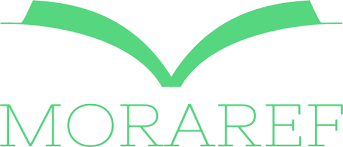Penggunaan Alat Peraga dalam Metode Bercerita untuk Meningkatkan Perbendaharaan Kata Anak 5-6 Tahun
Abstract
Improving vocabulary in children is very important to be stimulated, , the more vocabulary mastered by children it can facilitate children in interacting and communicating with others. This study aims to determine whether the vocabulary mastered by children is able to re-discuss the story that has been heard through the method of storytelling using props in children aged 5-6 years. Community service research in the form of service learning was conducted in kindergarten Aisyiyah Branch 1 Sungguminasa with a number of participants as many as 3 children. The instruments used in the form of props are images of animals that are cut out according to their shape and pasted on cardboard paper, besides the instruments used are also sheets of evaluation of implementation and intervention. Data were analyzed using descriptive statistics. The results of this study showed that the 3 participants ' language development was different, there were children who had dared to propose to retell stories that had been heard but still could not tell them in order, there were also children who could tell it well but needed more time because they were still hesitant and shy and among them there were children who only heard and listened to their friends tell stories. The findings in this study imply that storytelling methods can improve children's vocabulary, if they focus on listening and listening to the content of the story.
Downloads
References
Bawono, Y. (2017). Kemampuan berbahasa pada anak prasekolah : Sebuah kajian pustaka. Prosiding Temu Ilmiah X Ikatan Psikologi Perkembangan Indonesia, 116–125. http://jurnal.unissula.ac.id/index.php/ippi/article/view/2181 diakses tanggal 26/12/2020
Deiniatur, M. (2017). Pembelajaran Bahasa Pada Anak Usia Dini Melalui Cerita Bergambar. Elementary: Jurnal Ilmiah Pendidikan Dasar, 3(2), 190. https://doi.org/10.32332/elementary.v3i2.882
Hasmawaty, H. (2020). Kemampuan Menyimak Anak Melalui Kegiatan Bercerita (Studi Kasus Pada Taman Penitipan Anak Athirah Makassar). Jurnal Ilmu Teologi Dan Pendidikan Agama Kristen, 1(1), 56. https://doi.org/10.25278/jitpk.v1i1.463
Kridalaksana, H. (2013). Kamus Linguistik (edisi keempat). Gramedia: Pustaka Utama.
Kuras, A., Marnawi, & Sutarmanto. (2019). Penggunaan Metode Bercerita Dalam Meningkatkan Kosakata Pada Anak Usia 5-6 Tahun di TK. 9–25.
Kustianawati, S. (2020). Meningkatkan Keterampilan Berkomunikasi Melalui Metode Bercerita dengan Alat Peraga Wayang pada Anak Kelompok B TK Dwijorini Tretep. Media Pengabdian Pendidikan : Jurnal Pengabdian Dalam Bidang Pendidikan Dan Pengajaran, 14(1), 35–44. https://doi.org/10.26877/mpp.v14i1.5531
Munirah, M., & Hardian, H. (2016). Pengaruh Kemampuan Kosakata Dan Struktur Kalimat Terhadap Kemampuan Menulis Paragraf Deskripsi Siswa Sma. Jurnal Pendidikan Bahasa Dan Sastra, 16(1), 78. https://doi.org/10.17509/bs_jpbsp.v16i1.3064
Nuriani, N. W., Lasmawan, I. W., & Sutama, I. M. (2014). Efektivitas Metode Bercerita Dengan Alat Peraga Tiruan Untuk Meningkatkan Kemampuan Berbahasa Dan Minat Belajar Anak Di Kelompok B Tk Barunawati. E-Journal Program Pascasarjana Universitas Pendidikan Ganesha Program Studi Pendidikan Dasar, 4, 1–10.
Panjaitan, A. A. S., Radiana, U., & Miranda, D. (2020). Analisis Metode Bercerita Pada Anak Usia 5-6 Tahun. Jurnal Pendidikan Dan Pembelajaran, 1999(December), 1–6.
Rambe, A. M., Sumadi, T., & Meilani, R. S. M. (2021). Peranan Storytelling dalam Pengembangan Kemampuan Berbicara pada Anak Usia 4-5 Tahun. Jurnal Obsesi : Jurnal Pendidikan Anak Usia Dini, 5(2), 2134–2145. https://doi.org/10.31004/obsesi.v5i2.1121
Ridwan, & Bangsawan, I. (2021). Seni Bercerita, Bermain dan Bernyanyi. http://repository.uinjambi.ac.id/7400/
Santrock, J. W. (2019). Life-span development, 7th ed. In Life-span development, 7th ed. McGraw-Hill Higher Education.
- Authors retain copyright and grant the journal right of first publication with the work simultaneously licensed under a Creative Commons Attribution License that allows others to share the work with an acknowledgement of the work's authorship and initial publication in this journal.
- Authors are able to enter into separate, additional contractual arrangements for the non-exclusive distribution of the journal's published version of the work (e.g., post it to an institutional repository or publish it in a book), with an acknowledgement of its initial publication in this journal.
- Authors are permitted and encouraged to post their work online (e.g., in institutional repositories or on their website) prior to and during the submission process, as it can lead to productive exchanges, as well as earlier and greater citation of published work (See The Effect of Open Access).








